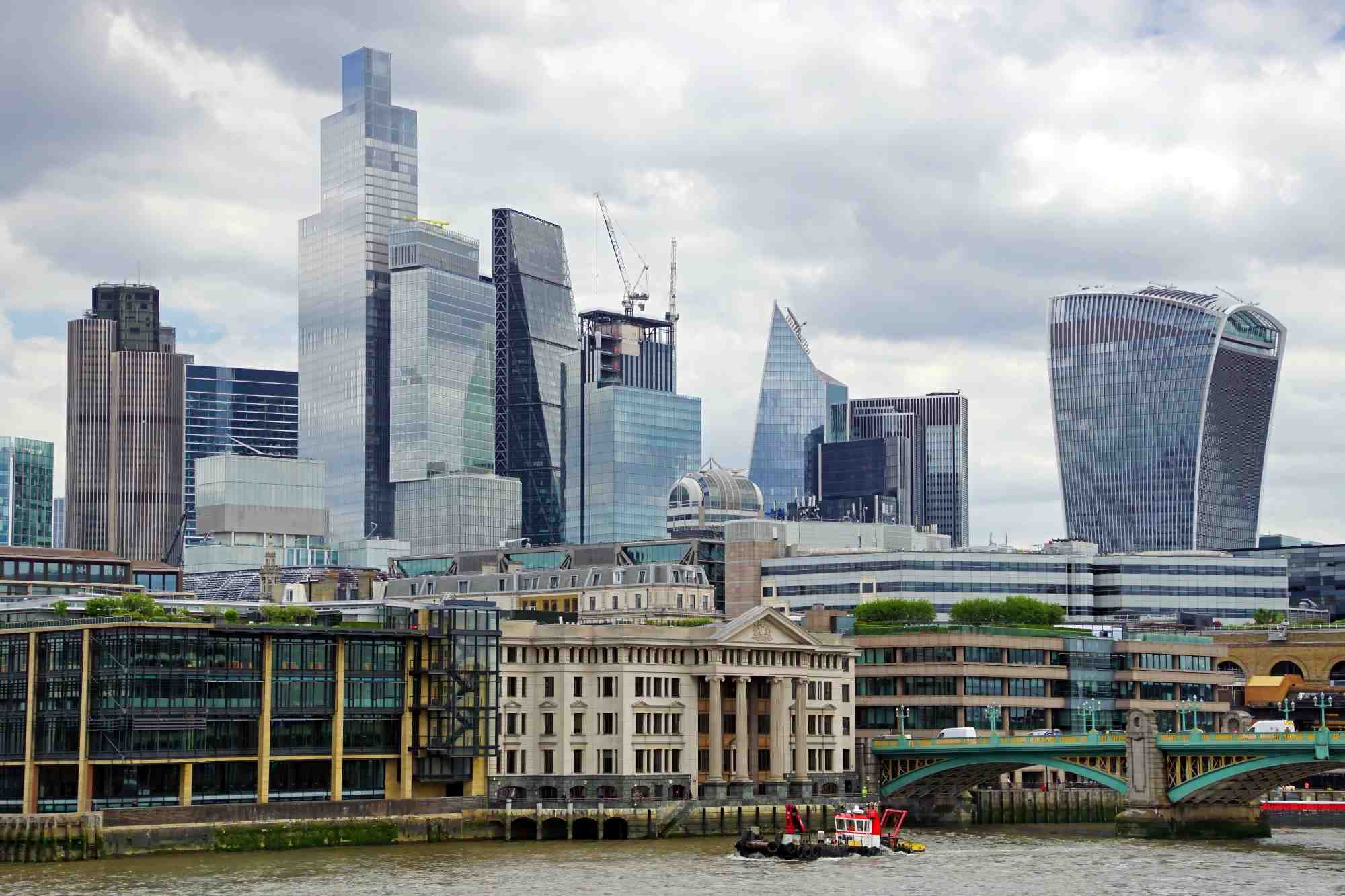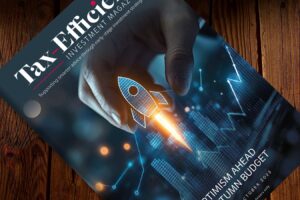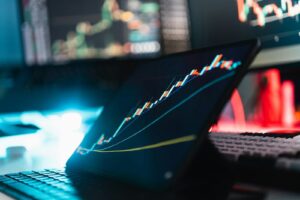Many investors are asking whether the Federal Reserve will cut again in December or leave the fed funds target rate at the current 4.50% to 4.75% range. We think a more interesting question is where the target range might be at the end of 2025, particularly considering President-elect Donald Trump is widely expected to raise tariffs in his next term.
We believe the Fed is likely to continue cutting rates next year, and the debate is how fast or slow it will proceed. Despite some risk of aggressive tariffs, we do not expect the Fed to reverse course and raise rates. Standard monetary policy rules suggest that it would take a large inflation shock – usually the type associated with a global supply shock – to prompt the central bank to raise rates again. And even then, inflation expectations and the labor markets would matter.
A more normal economy
We’ve been arguing that the pandemic, government policy actions, and geopolitical tensions over the last four years created a highly unusual environment, with uneven growth and elevated inflation that spurred aggressive moves by central banks around the world as they sought to restrict their economies and prevent inflation expectations from rising.
However, by many measures, many economies – including the U.S. – are now starting to look more normal than they have at any point since the pandemic. While price levels remain elevated, inflation is running at or very close to central bank targets, labor markets appear back in balance (for example, the ratio of vacancies to unemployed workers is below pre-pandemic levels in the U.S.), and real wealth is essentially back to pre-pandemic trends – all while long-term inflation expectations have remained anchored.
The one caveat of this return to normal is monetary policy. An economy that has more fully recovered from the unique set of shocks during and since the pandemic should also be able to return to more “normal” central bank policy, and interest rates. But what is normal?
One useful benchmark is comparing rates today with a range of monetary policy rules and prescriptions for the appropriate level of rates. In past discussions, we’ve used a set of rules that were first introduced by James Bullard when he was president of the St. Louis Fed and that built upon the well-known Taylor rule for Fed policy developed by John Taylor (see Bullard’s 2023 paper: “Is Monetary Policy Sufficiently Restrictive?”).
The peak policy rate range prescribed by Bullard’s rules was between 5% to 7% when he wrote the paper, versus the actual peak this cycle of a range of 5.25% to 5.5%. However, now his rules suggest that actual monetary policy should be between 100 basis points (bps) to 200 bps below the current midpoint (about 4.6%) of the fed funds rate range. If we adjust upward Bullard’s −0.5% to 0.5% assumed range for the real neutral interest rate to be more in line with the Fed’s current long-run real policy rate projection of 0.5% to 1%, these rules still prescribe a level for the fed funds rate that is 50 bps to 150 bps below where it is today.
Figure 1: Realized target fed funds rate (upper bound) vs. Taylor-type rules

Source: Federal Reserve Bank of St. Louis, Haver Analytics, and PIMCO calculations as of 8 November 2024. Shaded region depicts a range of Taylor-type monetary policy rules. Range of Taylor rules is based on “Is Monetary Policy Sufficiently Restrictive?” by James Bullard, 1 June 2023.
Putting it more bluntly, these monetary policy rules suggest there is room for the Fed to cut rates further – even under a range of scenarios for the unemployment rate and inflation.
Monitoring inflation risks
What if U.S. inflation ramps up again? Many clients ask us what it would take for the Fed to start raising rates. Once again using policy rules as a benchmark, core PCE (Personal Consumption Expenditures) inflation – currently at 2.7% – would need to reaccelerate back above 4.0%–4.5%, all else equal, before the same range of policy rules would start to prescribe a policy rate above where it is today.
What could cause inflation to accelerate back above 4.0%? Under a very aggressive tariff scenario, inflation could come close. However, under a more moderate, China-focused tariff implementation, the inflationary effects are likely to be small, and even potentially ignored by the central bank.
Let’s look at the math, setting aside for the moment how foreign exchange markets are generally flexible and the U.S. dollar could appreciate significantly, helping offset the inflationary impacts of the tariffs (though with other likely effects, such as diminished demand for pricier U.S. exports). If we hypothetically assume a standard pass-through ratio of import price shocks onto consumer price inflation of 10 to 1 – meaning for every 10% increase in import prices, core consumer goods prices tend to rise by just 1% – there would need to be around a 15 percentage point (ppt) increase in the average effective tariff rate for core PCE inflation (which includes services as well as goods) to reach that range of 4.0%–4.5%.
Interestingly, a 15 ppt increase in the average effective tariff rate is exactly what’s estimated if Trump’s most aggressive tariff proposals come to fruition (i.e., a 60% tariff on Chinese goods and 10% tariffs applied to all other imports). However, this is much more aggressive than the roughly 3 ppt increase in the average effective tariff rate during the first Trump administration, which contributed an estimated 0.3 ppts to core U.S. inflation. And it’s unclear how forcefully the Fed would react to inflation in such a scenario, because the tariff policy would also likely weigh on growth and raise the unemployment rate, challenging the other half of the Fed’s dual mandate.
President Trump could also try to implement policies that offset the price level adjustment of tariffs. In 2018, he paired tariff hikes mostly focused on capital goods and other business inputs with a lower corporate tax rate in an effort to minimize the consumer price level impact. Perhaps this time, he could try to pair tariffs with other policies that seek to limit the price level adjustment.
So what would cause the Fed to hike? Perhaps another large global energy price shock that feeds into inflation expectations could do it. That is what happened in the 1970s, when the Fed had to reverse course and hike again after a series of cuts. Still, the pandemic provides some useful context: It marked one of the largest supply shocks the global economy has ever seen, coupled with one of the largest fiscal demand boosts, and still the Fed only hiked to a peak range of 5.25% to 5.5%.
Bottom line
Under a range of employment and inflation scenarios (and potential policy outcomes), the Fed has some room to cut. While the most aggressive tariff scenarios would make the Fed’s job tricky, the combination of higher inflation, and potentially higher unemployment, would likely limit the Fed’s appetite to further restrict the economy through higher rates.
So while recent stronger U.S. economic data could have the Fed considering a pause in December and/or adjusting its projected policy rate path somewhat higher in 2025, we think the broader trend, and distribution of potential outcomes, is toward lower policy rates. Inflationary scenarios that could change the outlook for gradual cuts would likely need to be large global supply shocks that start to feed into inflation expectations, but even then, the negative growth and labor market effects could be an offset. On the other hand, if the U.S. economy performs worse than we expect and the labor market weakens, the Fed could cut more quickly in an effort to close the gap between current policy and the Taylor-based rules.















